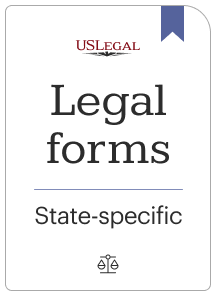

This form contains sample jury instructions, to be used across the United States. These questions are to be used only as a model, and should be altered to more perfectly fit your own cause of action needs. California Jury Instruction — 1.9.5.1 Corporation As Alter Ego Of Stockholder is a legal instruction used in California courts to determine if a stockholder can be held personally liable for the actions or obligations of a corporation. This jury instruction examines the concept of "alter ego" to determine if a corporation is being used as a shield to avoid personal liability for its shareholders. Under this instruction, the jury evaluates the circumstances that surround the corporation and the stockholder to determine if the corporation is merely a front for the individual's personal dealings. If the corporation is found to be the "alter ego" of the stockholder, the court may disregard the corporate entity and hold the stockholder personally liable for the corporation's actions or obligations. There are different types of California Jury Instruction — 1.9.5.1 Corporation As Alter Ego Of Stockholder, including: 1. Traditional Alter Ego: This type of alter ego arises when there is a unity of interest and ownership between the stockholder and the corporation, and the corporation is used as a device to avoid personal liability. Factors such as inadequate capitalization, commingling of personal and corporate assets, and failure to follow corporate formalities are considered when determining if a traditional alter ego exists. 2. Single Business Enterprise Alter Ego: This type of alter ego is applicable when multiple corporations are interrelated to such an extent that they are essentially one economic entity. If the stockholder uses multiple corporations to conduct a single business operation and disregards the separate legal status of each entity, the court may consider them as alter egos and hold the stockholder personally liable. 3. Reverse Alter Ego: Reverse alter ego occurs when a corporation is used as the alter ego of another shareholder or entity. In this situation, the corporation acts as a shield to protect the actions or obligations of a different individual or entity, rather than the stockholder seeking personal liability protection. In summary, California Jury Instruction — 1.9.5.1 Corporation As Alter Ego Of Stockholder analyzes whether a corporation is being used as an alter ego to evade personal liability for a stockholder. By evaluating factors such as unity of interest, adequate capitalization, commingling of assets, and failure to follow corporate formalities, the jury can determine if a stockholder can be held personally liable for the corporation's actions or obligations.
California Jury Instruction — 1.9.5.1 Corporation As Alter Ego Of Stockholder is a legal instruction used in California courts to determine if a stockholder can be held personally liable for the actions or obligations of a corporation. This jury instruction examines the concept of "alter ego" to determine if a corporation is being used as a shield to avoid personal liability for its shareholders. Under this instruction, the jury evaluates the circumstances that surround the corporation and the stockholder to determine if the corporation is merely a front for the individual's personal dealings. If the corporation is found to be the "alter ego" of the stockholder, the court may disregard the corporate entity and hold the stockholder personally liable for the corporation's actions or obligations. There are different types of California Jury Instruction — 1.9.5.1 Corporation As Alter Ego Of Stockholder, including: 1. Traditional Alter Ego: This type of alter ego arises when there is a unity of interest and ownership between the stockholder and the corporation, and the corporation is used as a device to avoid personal liability. Factors such as inadequate capitalization, commingling of personal and corporate assets, and failure to follow corporate formalities are considered when determining if a traditional alter ego exists. 2. Single Business Enterprise Alter Ego: This type of alter ego is applicable when multiple corporations are interrelated to such an extent that they are essentially one economic entity. If the stockholder uses multiple corporations to conduct a single business operation and disregards the separate legal status of each entity, the court may consider them as alter egos and hold the stockholder personally liable. 3. Reverse Alter Ego: Reverse alter ego occurs when a corporation is used as the alter ego of another shareholder or entity. In this situation, the corporation acts as a shield to protect the actions or obligations of a different individual or entity, rather than the stockholder seeking personal liability protection. In summary, California Jury Instruction — 1.9.5.1 Corporation As Alter Ego Of Stockholder analyzes whether a corporation is being used as an alter ego to evade personal liability for a stockholder. By evaluating factors such as unity of interest, adequate capitalization, commingling of assets, and failure to follow corporate formalities, the jury can determine if a stockholder can be held personally liable for the corporation's actions or obligations.